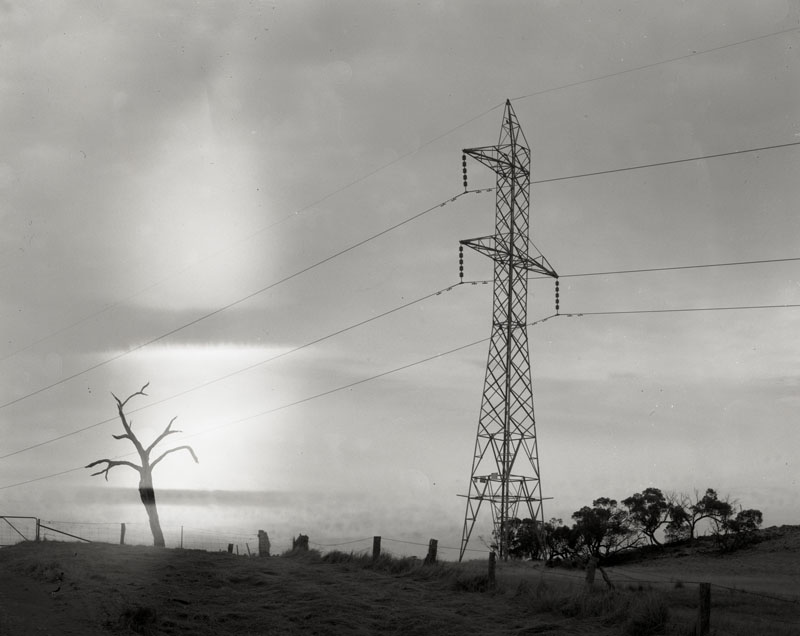A note on this image: I had a darkroom accident with a little light leak in my developing tank, causing the bright area on the left. I actually like the end result!
A broad look at the work of contemporary landscape photographers reveals some common themes. Exotic locations, shot near dawn or dusk. Beautiful (aesthetically pleasing), colourful images with careful composition, positioning of the elements in the image. There’s a very strong school of thought that says fine art landscape photography is by default shot at certain times of the day (I should note that many landscape photographers are seriously dedicated to mastering their craft, and this is not to diminish the quality of their work). The practical outcome of shooting later in the day is to get light and shadows that are more dynamic and exciting because they wrap around objects and create deep areas of light and shade, and if shooting colour you can find a wider range of colours at the ends of the day than in the middle.
I want to explore this a bit further.
One of the great defining strengths of photography is that it can tell the truth. Putting aside darkroom or photoshop editing, a photograph can show the nature of a thing exactly as it would have been seen by an observer. Limiting ourselves to shooting specific subjects at specific times or conditions, means we are only looking at a very narrow subset of the truth of what we are shooting in order to present it as favourably as possible.
So the question I ask myself – is there value taking photos that don’t just just meet contemporary standards of beauty – landscapes under harsh overhead sun, manmade scenes? I think that there is. I like beauty, but there can be interesting things hidden behind beauty that are worth seeing too. We can use photography to show some of these things about the world, to show the true nature of something, to tell stories about environmental or social issues, to show people a different way of looking at something familiar, or to show them something unfamiliar. I believe it is important to be exposed to things that are unfamiliar or thought provoking because that exposure can prompt critical thought, reflection, and growth.
A consideration in deciding to shoot less beautiful images that will be important to some, not others – saleability or appeal. Most of us have an audience in mind to some extent when taking photos – whether it is just to show to other people for enjoyment or to earn a living, it might be a strange idea that you would deliberately take a photo of something that could have been presented in a more beautiful light. The challenge would be to use other methods to create an image with visual impact, that can communicate something unique.
My conclusion, if one is needed is that you can achieve meaningful results in photography by looking outside of what lots of others are doing. Arguably, if commercial success or recognition as an artist is important, you’re actually better off avoiding misty rainforests, tropical beaches, barren deserts or Antarctica! That, or I’m just trying to justify taking photos at any chance I get instead of waiting for sunset. What do you think?

Hi Tim. I like what you have written about ‘landscape as art’… and agree about photos being ‘unique’, and conveying something special. How ‘unique’ or ‘different’ to others… that is very hard to say / quantify.
To me, the ‘truth’ about photography is very important. Particularly in nature photography I want to feel a photo represents what is in reality, and is not clever photo manipulation. Not that I’m against post – processing, but I like accurate images, reflecting the colour, hues, lighting, shadows, reality of the ‘feel’ of the composition as if I would be there.
Thanks for your thoughts! Regards, Paul